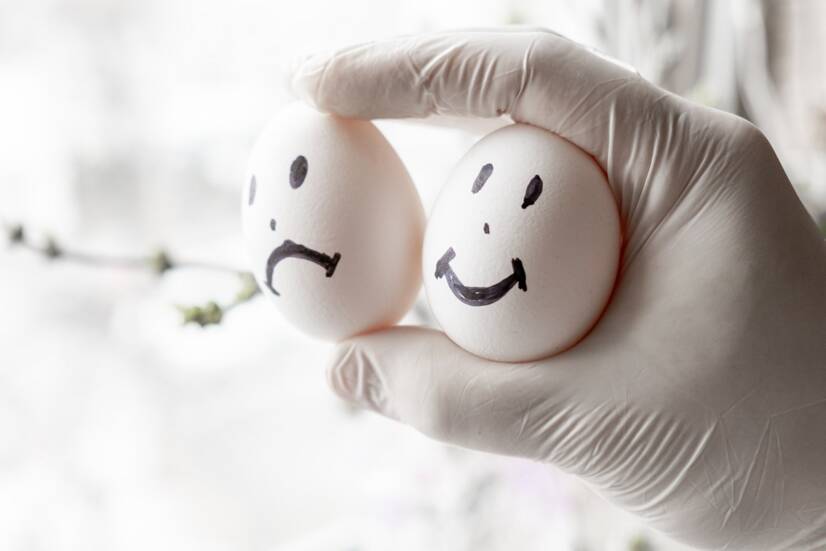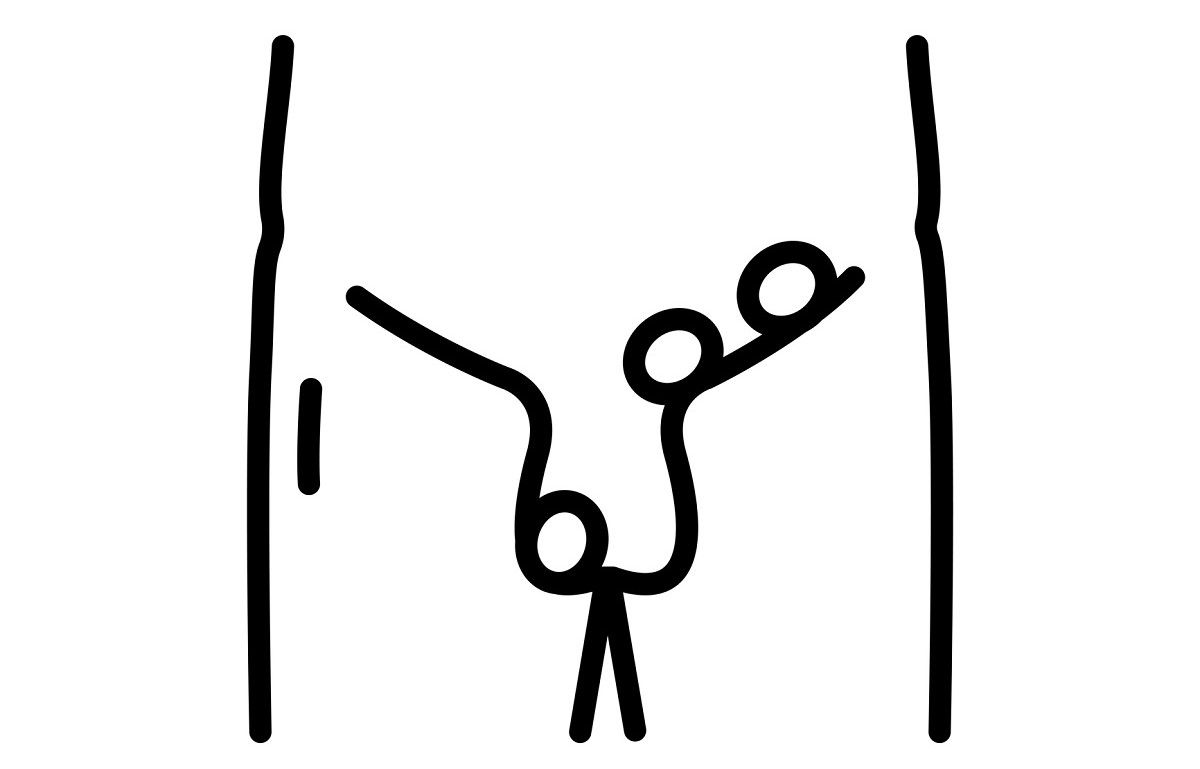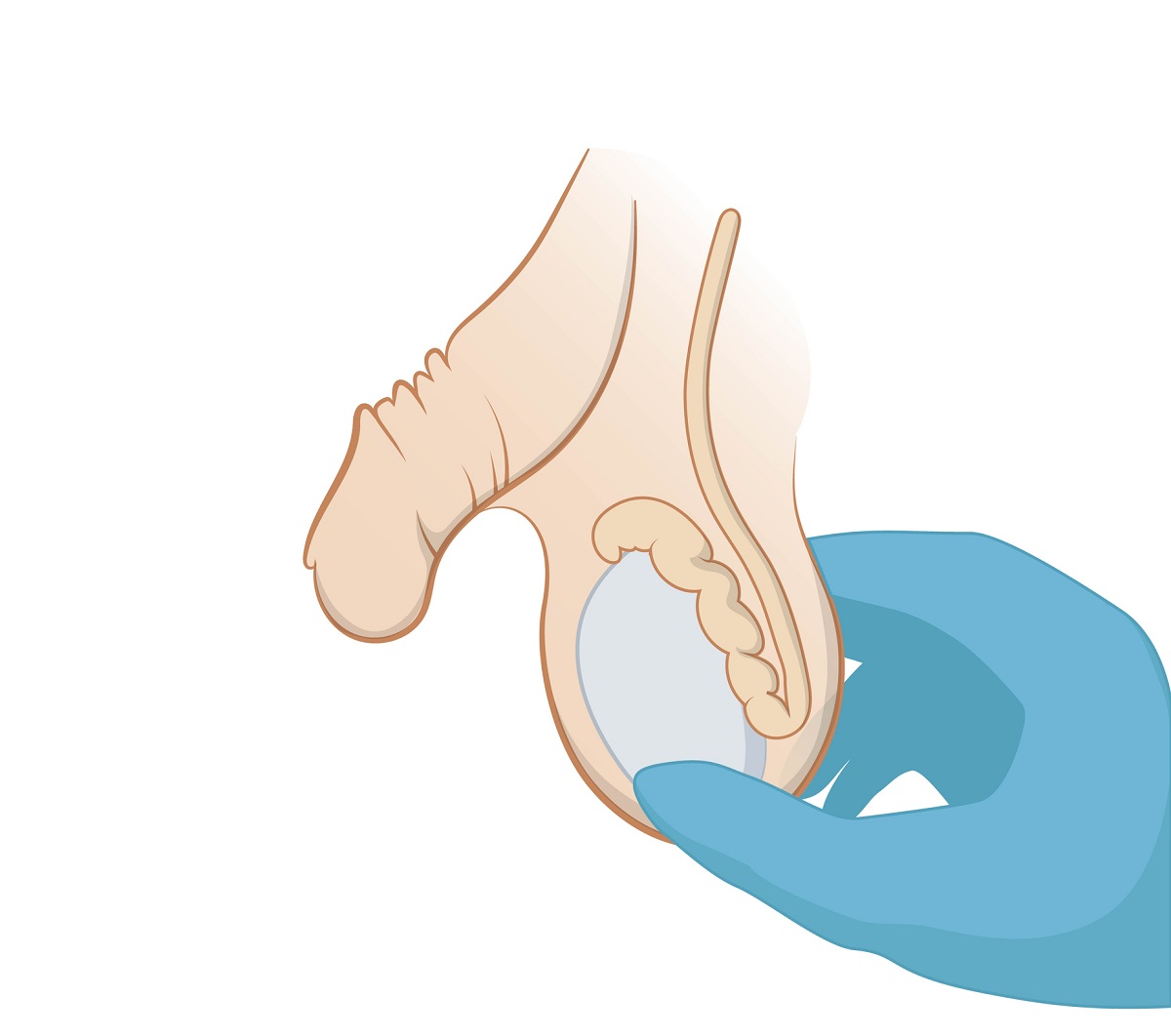- Embryology: a textbook for medical students and general nurses
- Pathology: Jiří Mačák, Jana Mačáková
- springeropen.com - The ectopic testis: the experience of a tertiary urology centre in Upper Egypt
- urologyhealth.org - Cryptorchidism
- clevelandclinic.org - Undescended testicles
- nhs.uk - Undescended testicles
- mayoclinic.org - Undescended testicle
The undescended testicle: What is cryptorchidism? And its consequences

Undescended testicle is one of the diseases of the male genital organs. It means the absence of testicles in the scrotum.
Most common symptoms
Characteristics
Failure to descend the testicles is technically called cryptorchidism.
It is a disease affecting only the male sex.
Undescended testicle refers to a testicle that has not moved into the skin sac under the penis, i.e. the scrotum, during intrauterine development.
It is most commonly found in prematurely born boys. However, in most such babies, the testicle moves into the scrotum after birth within the first few months of life.
Testicular development
During a boy's fetal development, the testicles form in the abdominal cavity. Then, between one and two months before birth, they move and descend into the scrotum through a tubular passage in the groin, also called the inguinal canal.
When the descent of the testes stops or is delayed, the testes do not descend into the scrotum.
It can occur unilaterally or bilaterally.
In boys, undescended testicles occur in an average of 1 in 25. Only about 1 in 100 boys who are not treated will have undescended testicles.

When diagnosing undescended testicles, you may encounter the terms:
Cryptorchidism
Cryptorchidism is the exact name for undescended testicles that remain in the abdominal cavity.
Pseudo-cryptorchidism
Pseudocryptorchidism is a condition in which the descent of the testicle stops and the testicular deposit remains in the inguinal canal.
Retractable testicle - retractable testicle
This type is very common.
The child is born with a descended testicle and during its development during the growth period until prepubertal age, the testicle may appear to be missing.
This may indicate a retractable testicle that is mobile and moves between the scrotum and groin.
This type of testicle can easily be moved by hand during the examination.
Such testicles change due to temperature, excitement, fear.
This is due to the reflex of the scrotal muscle. This reflex usually subsides during puberty.
Ectopic testicle
Is a condition where the testicle is in the wrong place, outside the normal path of descent of the testicle and outside the scrotum.
This type is one of the rare testicular anomalies.
Causes
From the 33rd week of pregnancy, the male fetus undergoes testicular descent.
Testicular undescent occurs during intrauterine development, 1-2 months before birth.
Its cause is not exactly known. It is also thought to have an effect:
- Genetics
- maternal health
- hormones
- nervous activity, which also influences testicular development and descent
Non-descent of the testicles can also be caused by:
- disorders of testicular development
- testicular prolapse outside the scrotum - ectopic testicles
- insufficient stimulation of hormones affecting testicular descent
It happens that the testicles drop but do not attach to the scrotum. This condition is often not detected until adulthood.
Risk factors for undescended testicles
- Premature birth of a baby
- Low birth weight
- Family history of undescended testicles or genital development disorders
- Fetal development that may be restricted due to an abdominal wall defect or Down syndrome
- Improper lifestyle habits of the mother during pregnancy, such as alcohol use, smoking
Symptoms
A symptom of undescended testicles is the absence of the testicle in the scrotum.
Right-sided undescended testicle is more common.
The testicle is non-palpable and not visible.
The only symptom of undescended testicle is its absence from the scrotum.
In the case of a mobile testicle, with slight pressure, the testicle is displaced towards the groin. This condition can cause a feeling of pressure, tension and pain in the groin and genital area.
At puberty, if left untreated, undescended testicles will stop and make it impossible to produce healthy sperm. This leads to infertility.
Read also our article.
Diagnostics
Shortly after birth, during the first examination by a neonatologist, the baby is found to have descended into the scrotum.
During the developmental period, the testicles are regularly examined by palpation and visual examination by the paediatrician during routine check-up.

In case of suspicion, genetic and hormonal examination, sonography, pelvic MRI and, in case of an unclear result, diagnostic laparoscopy are performed to reveal the presence of testicles.
If undescended testicles are confirmed, the child is followed up until the age of 6 months. During this period, the testicles are most likely to descend spontaneously.
If the testicle does not descend within the first few months, the problem is unlikely to correct itself and treatment is necessary.
Course
For proper development and reproductive function, the testes must be placed in the scrotum. This is because the temperature in the scrotum is lower than in the abdominal cavity.
At puberty, the testicles begin to produce sperm. For healthy sperm development, the testicles must be kept in a place where the temperature is two to three degrees lower than the temperature in the abdominal cavity.
Therefore, they are stored in the scrotum under the penis.
When the testicle is undescended, the testicular cells that produce and nourish sperm are reduced in function and shrink. This leads to sterility and also to the proliferation of the Leydig cells of the testicle. These cells produce the hormone testosterone. Their proliferation can lead to the formation of tumours.
Read also: What is the hormone testosterone and how does it affect the male body?
In cryptorchidism, a tumor is four times more likely to appear in an undescended testicle than in a descended testicle.
A descended testicle is also more at risk of developing a tumour in this diagnosis compared to a physiological descended testicle that occurred during fetal development.
In bilateral undescended testis, sterility and increased risk of tumour occur.
Complications of undescended testicles include:
- Increased risk of testicular cancer
- Fertility problems due to reduced sperm count and poor sperm quality
- Torsion of the testicle. Twisting of the spermatic cord, which ensures the movement of sperm from the testicle to the penis. When twisting occurs, there is insufficient blood supply to the testicle, which is manifested by sudden pain. If left untreated, it can lead to testicular necrosis and the need for subsequent removal. Such twisting of the spermatic cord is 10 times more common than in descended testicles.
- Injury to the testicle, which is compressed in the ducts and can be damaged by pressure, for example by bone
- Hernia in the groin area. With a loose inguinal canal, an opening is created between the groin and the abdomen through which parts of the intestine can be pushed into the groin.
How it is treated: Undescended testicle
Undescended testicle and its treatment
Show moreHow the disease manifests itself in children
Undescended testicle is treated by
Other names
Interesting resources










